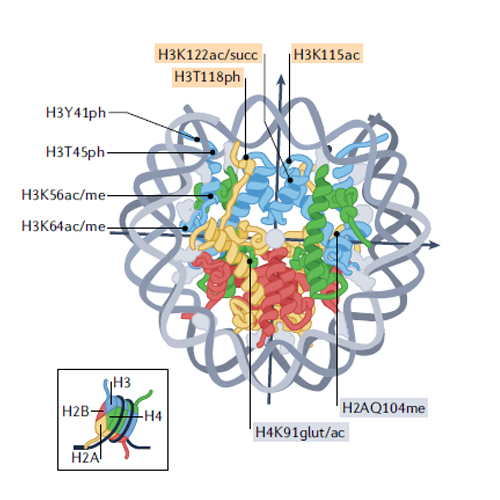Histone post-translational modifications — cause and consequence of genome function
2022-03-25
Gonzalo Millán-Zambrano, Adam Burton, Andrew J. Bannister and Robert Schneider
Nat Rev Genet 23, 563–580, 2022
Much has been learned since the early 1960s about histone post-translational modifications (PTMs) and how they affect DNA-templated processes at the molecular level. This understanding has been bolstered in the past decade by the identification of new types of histone PTM, the advent of new genome-wide mapping approaches and methods to deposit or remove PTMs in a locally and temporally controlled manner. Now, with the availability of vast amounts of data across various biological systems, the functional role of PTMs in important processes (such as transcription, recombination, replication, DNA repair and the modulation of genomic architecture) is slowly emerging. This Review explores the contribution of histone PTMs to the regulation of genome function by discussing when these modifications play a causative (or instructive) role in DNA-templated processes and when they are deposited as a consequence of such processes, to reinforce and record the event. Important advances in the field showing that histone PTMs can exert both direct and indirect effects on genome function are also presented.








